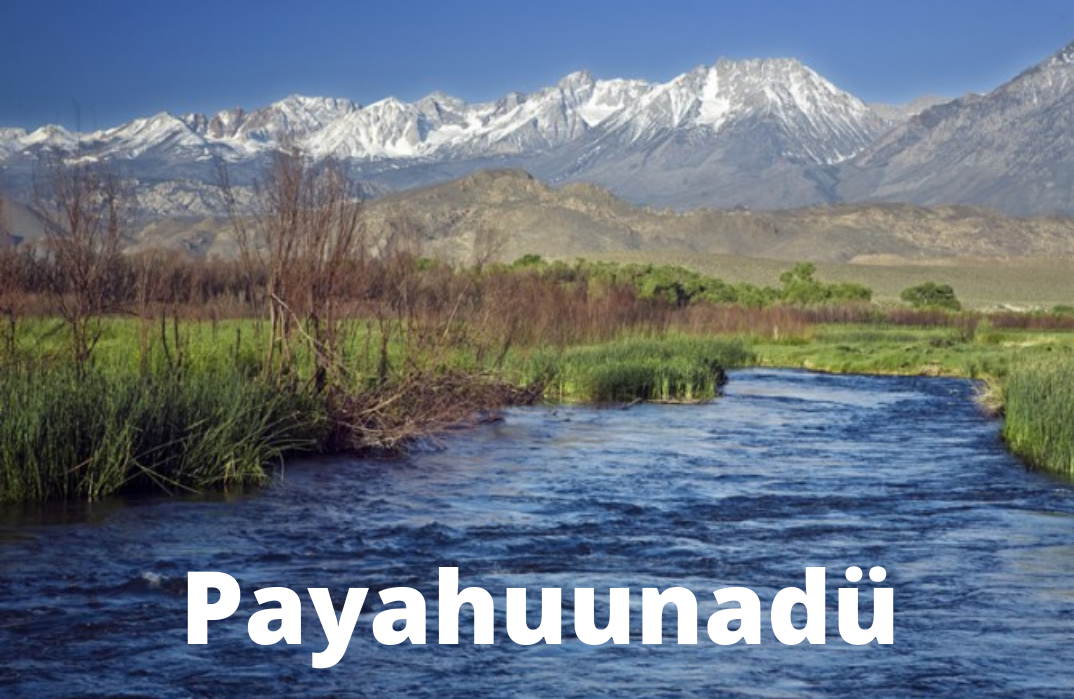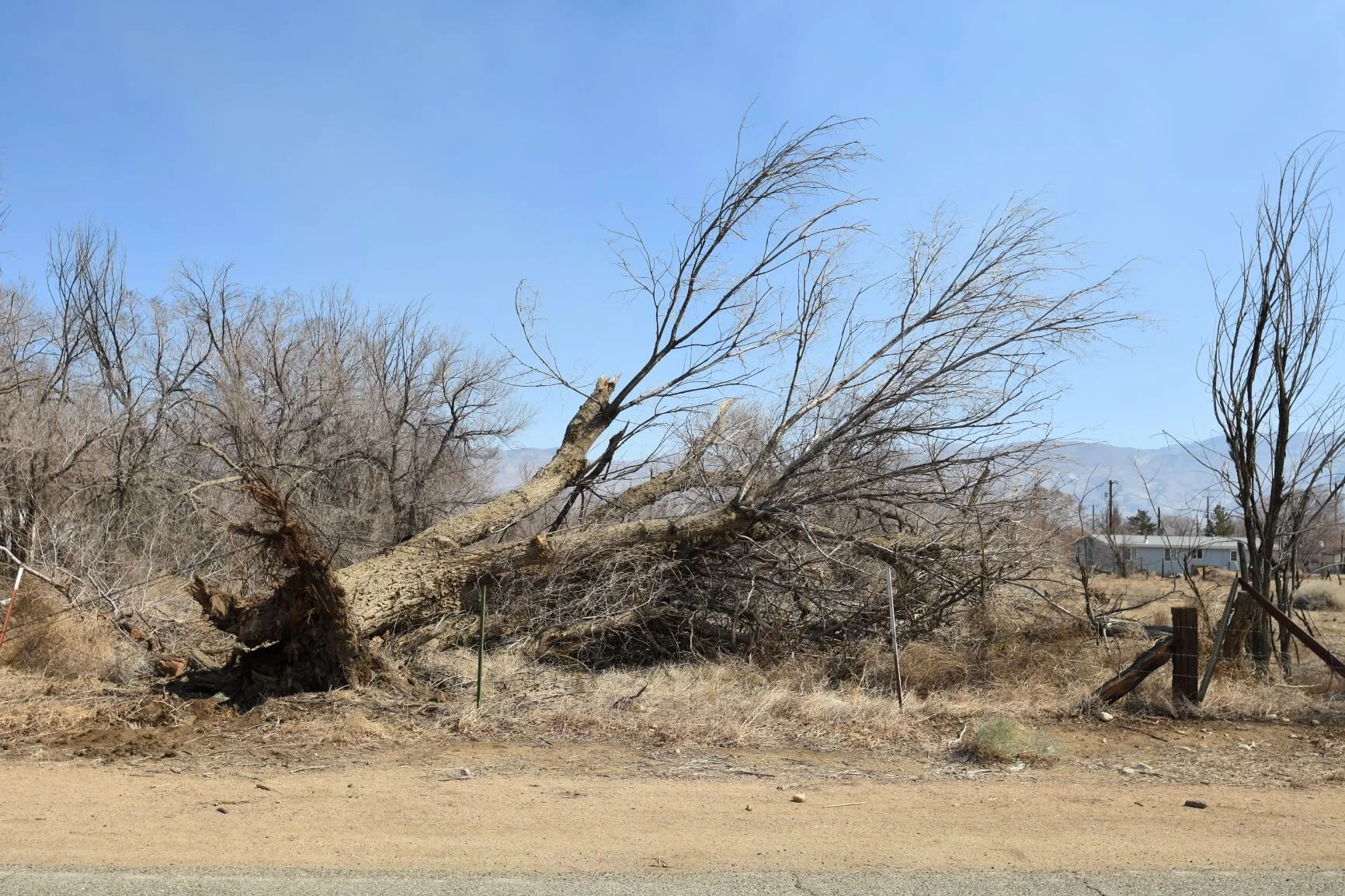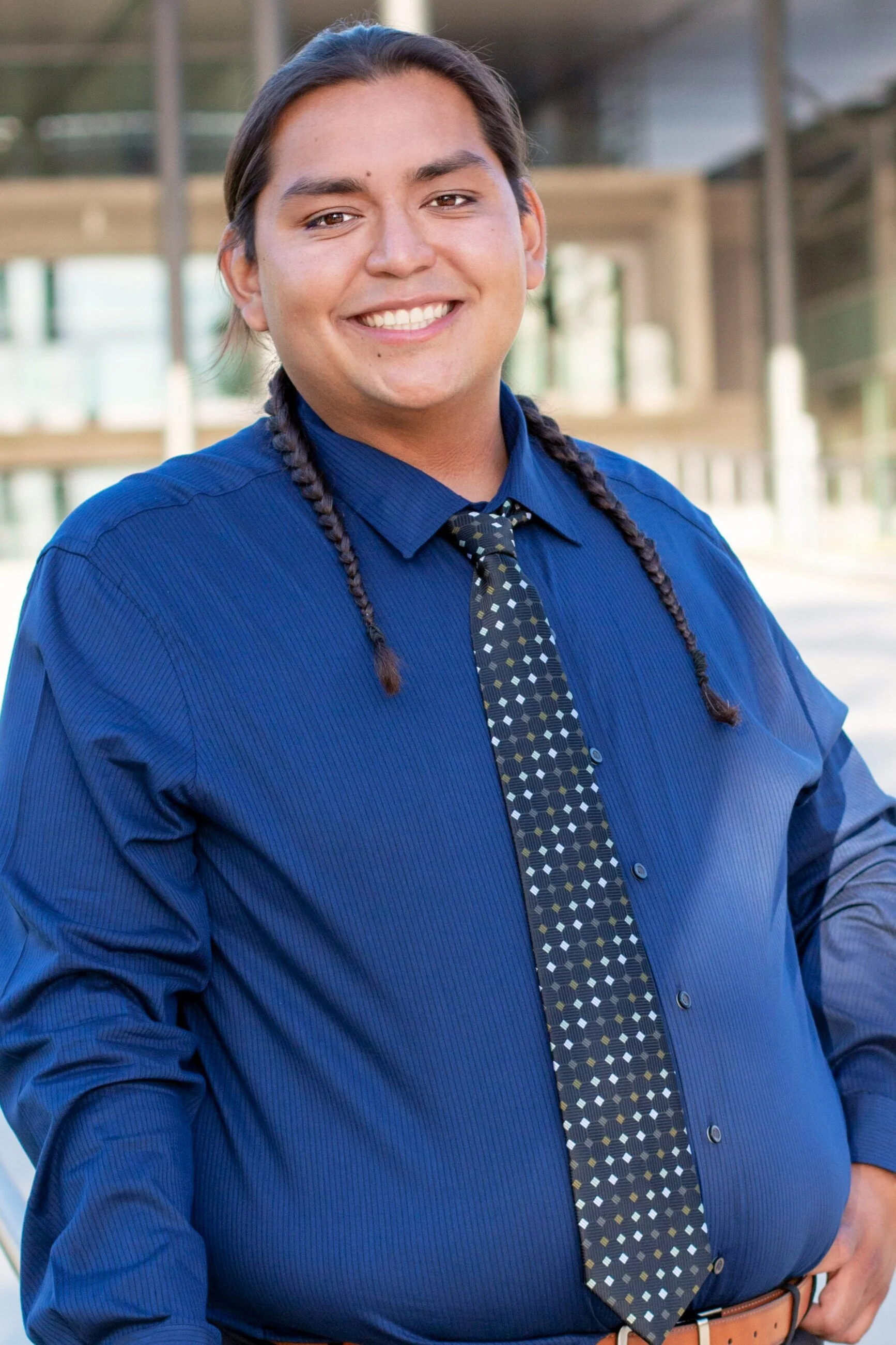Water: A Cultural Resource
In my heart, I have always identified as a water activist, revering this sacred resource. However, writing the Every Last Drop series with the Keep Long Valley Green Coalition takes me to a whole new level. Researching and crafting exposés on the Los Angeles Eastern Sierra Water Wars is so meaningful, so truth to equality, that it makes me insanely proud to be part of this mission to leave more water in the Eastern Sierra on these sacred lands of Payahuunadü.
In the latest issue of Every Last Drop, I interviewed Noah Williams, Bishop Paiute Tribal member and Water Program Coordinator for Big Pine Tribe of Owens Valley, to give the raw, honest truth from the Native perspective.
Twenty-five years ago, I began on a quest to find my Native grandmother. I felt such an inclination for bare feet and hugging trees that I wanted evidence that proved my connection to an earth-centric lifestyle where I had lived in community deeply connected to the earth’s cycles and animism, the belief that the world is alive and speaking to us. I scoured records at tribal offices, ordered a slew of death and birth certificates, consulted censes, and attended every sacred event I was invited from sweat lodges to Bear Dances to Naming Ceremonies. I was so grateful for every invitation.
Concurrently, I wanted to wash the stain of blood from my hands based on ancestor’s actions that needs to be healed. I received the mission as a child when we moved to the hill that had been my ancestor, a Spanish Army Sergeant’s olive groves. I felt the deep wounds caused there. I was a psychically awake child and found the battle site where the Mexican American war was fought and Native village on the other side of the river. I felt the pain and see the domination cycles playing out today, in our family, in Orange County and every where power has crushed the marginalized, just because they can.
Giving my pen, my sword, to Noah to help me craft this story is how we break the power cycle that has held down the voiceless. This is ancestral work that does not mire in games of misplaced blame but humbles oneself so that control and manipulation are not the goal, but a steadfast connection to each other where we share our precious resources.
Water: A Cultural Resource (originally published on Keep Long Valley Green website)
The Nüümü people, an Indigenous group in the Owens Valley, put the waters of the Eastern Sierra to beneficial use for thousands of years, working their traditional homelands, known as Payahuunadü, into a lush environment.
“We transformed our landscape using ancient irrigation practices by diverting flows of each and every creek coming off of the Sierras,” said Noah Williams, a Bishop Paiute Tribal member. “We understood that if you spread the water, you create life. A lush environment was in part designed by our ancient peoples and their practice of spreading the water, slowing it down, letting the water move slowly with the natural contours of the land, allowing the water to seep back into the ground in places it would not have reached without human intervention.”
“The first conflicts between settlers and my ancestors arose from livestock grazing on our traditional food crops and land/water disputes.” Williams said. “I remember hearing stories about the Owens Valley Indian War in 1863 kicking off after someone killed one of the settlers' livestock. This conflict led to massacres and a forced march to Fort Tejon which drove out many of the Tribal people out of the Valley for quite some time. Today, we are the product of our ancestors who either fled captivity, or survived that march.”
Then in 1913, the precedence of a patriarchal power structure allowed the Los Angeles Department of Water and Power (LADWP, or simply DWP) to pump water out of their ancestral homeland and divert this precious resource into the Los Angeles Aqueduct.
Records show groundwater pumping taking place as early as the 1920s. However, groundwater pumping by DWP ramped up significantly with the completion of the second barrel of the L.A. Aqueduct in 1970. A greater capacity to export water from the Owens Valley led to the expansion of L.A. 's groundwater pumping program, shortly thereafter a substantial increase in groundwater exports began to fill the second L.A. Aqueduct. This increase in groundwater exports led to a greater loss of habitat and cultural resources throughout the Valley.
The ecological, economic, and cultural damages from the second pipe that turned on in 1970 is the focus of our current water wars between the Eastern Sierra and Los Angeles.
Residents observed the significant drop of the groundwater table and mass loss of vegetation throughout the Owens Valley. This would include the loss of springs, riparian zones, meadows, and wetlands. It is important to note that habitats such as meadows are groundwater dependent. In addition to exporting massive amounts of groundwater in the Valley through it's groundwater pumping program, DWP also diverts surface water from the Owens Basin and later the Mono Basin, to L.A. via the L.A. Aqueduct.
“When you remove the water from the land, you remove life. The surface water diversions not only halted our irrigation practices we used for subsistence, it also contributed to the loss of habitat across the valley, most notably, the loss of Owens Lake. Our Elders tell stories of digging a couple of feet in our own backyards and reaching water,” Williams continued. “Now, because of L.A. the average groundwater depth beneath the Big Pine Reservation is eighty feet. There is not a single living tree or bush with roots that long. Nothing can survive here without an application of surface water.”
Noah carries forward the legacy of two men: Alan Bacock, his predecessor as the Water Program Coordinator for the Big Pine Paiute Tribe of the Owens Valley, and his late and much-admired father, Harry Williams, a water warrior who narrated the movie “Paya: The Water Story of the Paiute.”
This photo of dead tree stumps, taken by Noah Williams, illustrates the ravages on the land and vegetation of the Owens Valley resulting from a century of combined surface water diversion and groundwater pumping by LADWP
“My father told me about places that no longer exist,” Williams said. “He documented DWP’s removal of cottonwood stumps that provided evidence of the cottonwood forest that used to be scattered up and down the valley. Once DWP started to divert water away from these areas to the aqueduct and later the groundwater pumping, (that) is what led to the loss of this resource. Many of these areas were lost to fire in the 1970's, some of the most notable areas where these forests existed are near the Owens River and the Sunland Indian Allotments.
“DWP frames the narrative as if they belong here and that the Valley was always dry. It seems they are trying to erase our memories. Our Elders who remember how fertile our home once was are dying off or exhausted from fighting for our water. I grew up playing in the creeks and want my future children to enjoy the same pleasure.”
Noah Williams,
Indeed, it is difficult to reimagine Big Pine, currently a dusty and bleak land, as verdant with living streams, creeks, meadows, grasses, ponds, lakes, and forests of cottonwood trees. Paya means water in the Paiute language, an offshoot from the Uto-Aztecan language. Central to their culture, water is the root name of their home, Payahuunadü, the land of flowing waters. Known as the Paiute, these people indigenous to the Eastern Sierra, who have long lived in bands of families with unique dialects, refer to themselves as Nüümü, Nuumu or Numa, depending on location.
It is necessary to recognize that, for more than a century, governments and institutions like DWP have attempted to deny American Indian peoples their unique cultures and traditions. Beginning in the 1880s through the mid 1900s, American Indian children were forcibly taken from their homes and made to assimilate in institutional schools, such as Stewart Indian School in Carson City, Nevada, and Sherman Indian High School in Riverside, California. Here in the Eastern Sierra, Indigenous people have been deprived of their cultural heritage related to water, resulting in economic hardship, collapse of community health, and extreme disadvantage for building generational wealth.
“There needs to be some accountability from LADWP for the ecological disasters they created up and down the valley.” Williams said. “Restoring the wetlands at Fish Springs, where now there is a hatchery is a start.”
Do you know how a fish hatchery in Owens Valley works? Find out the mechanics, tourism and ecological sustainable solutions in the next issue of Every Last Drop.



